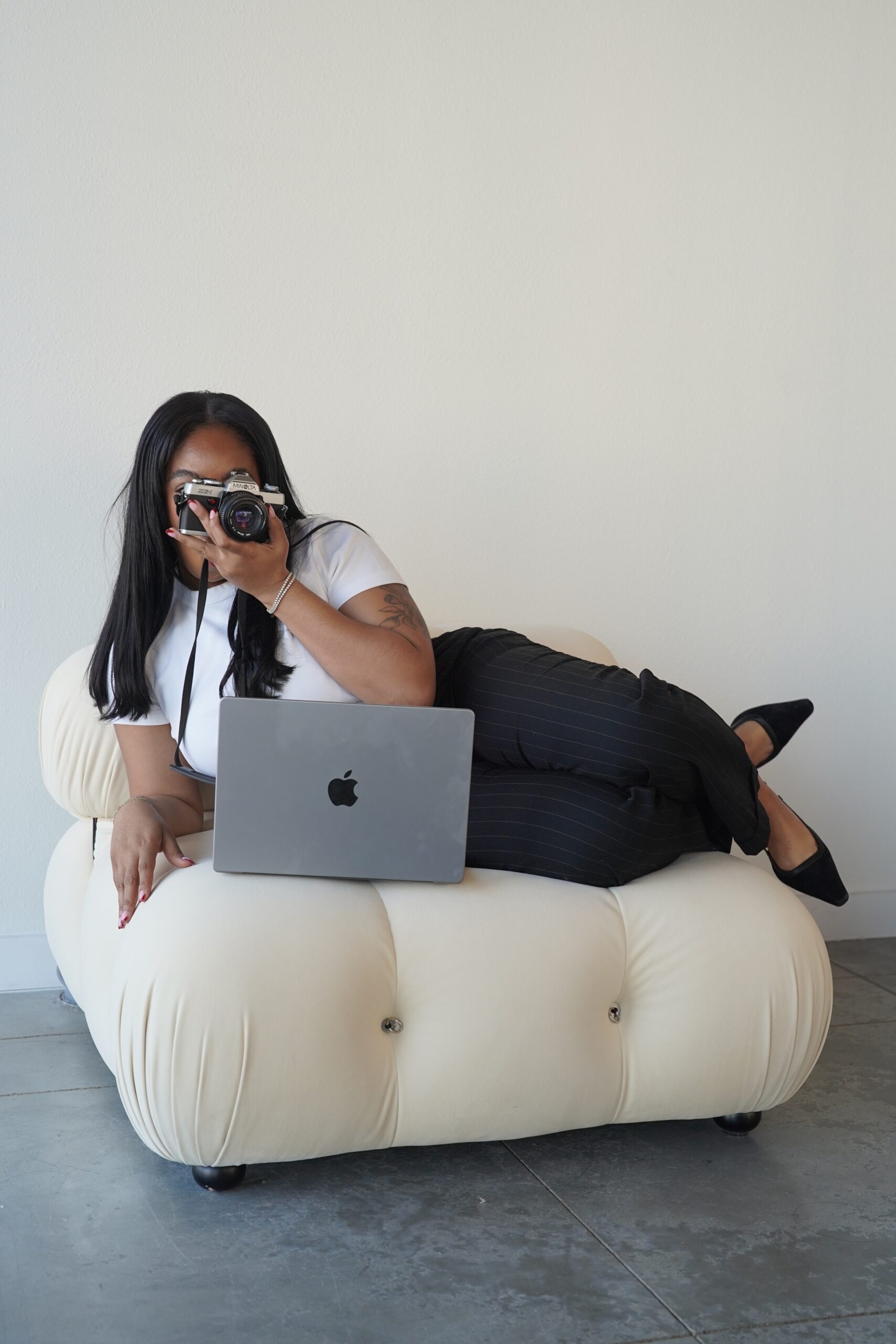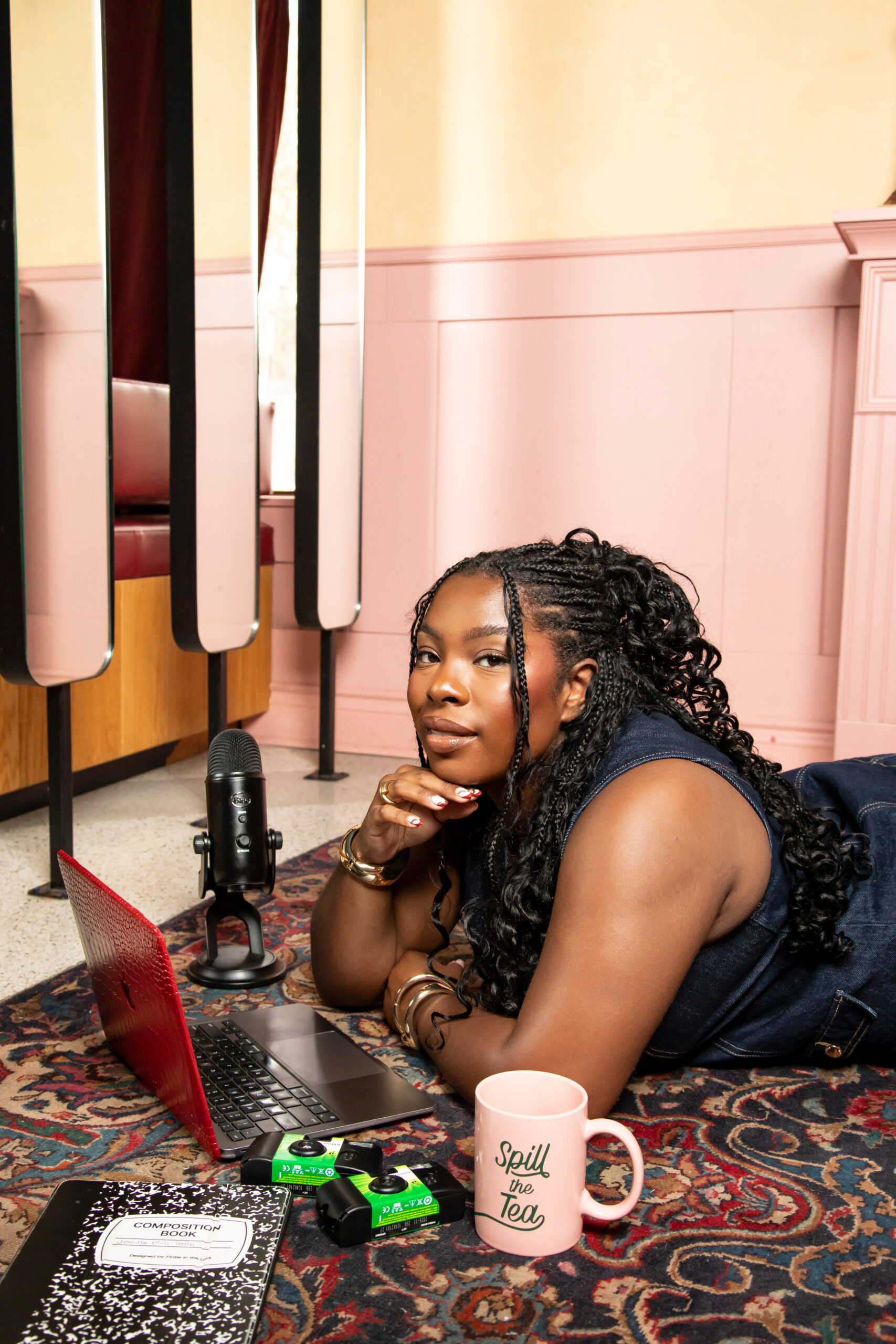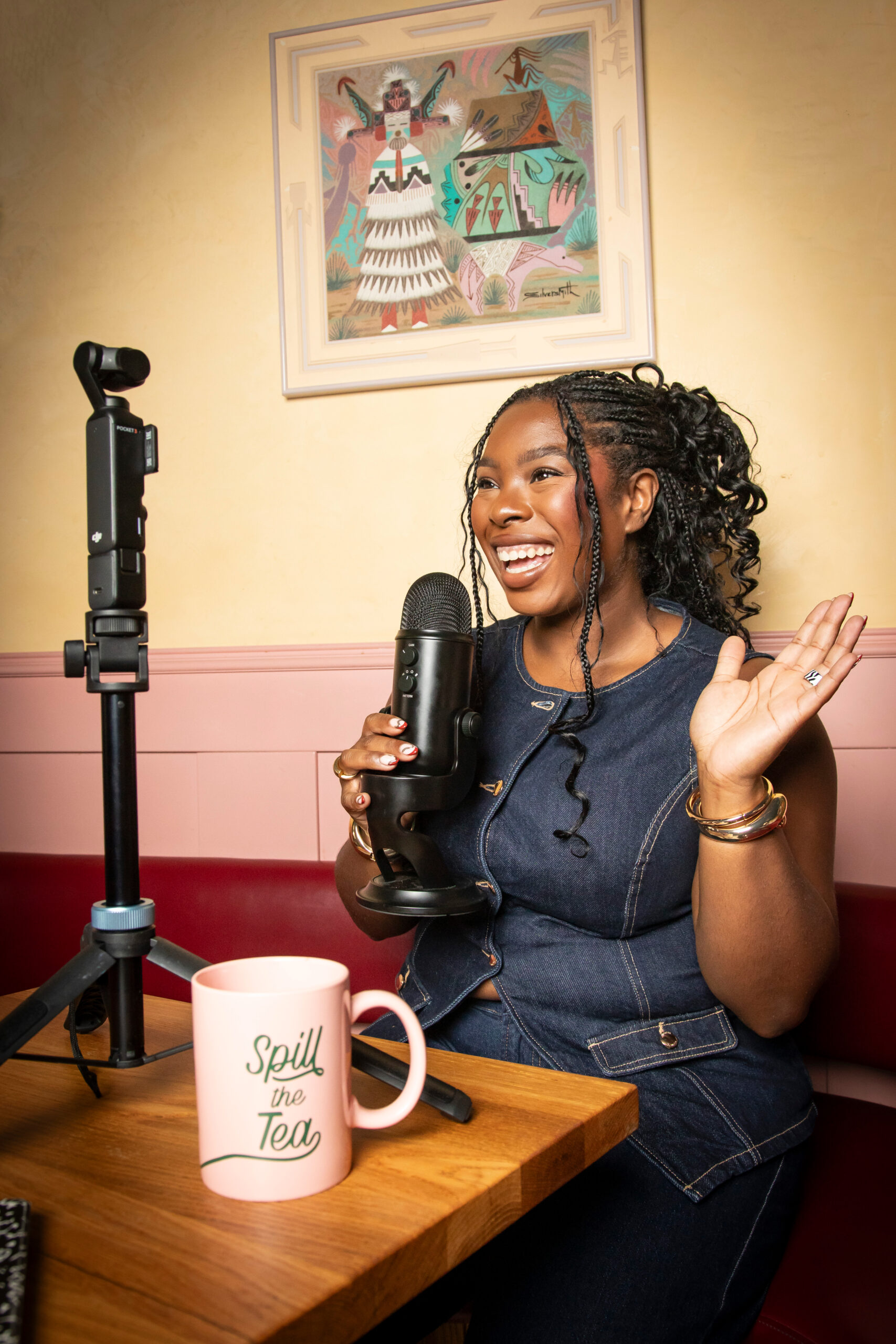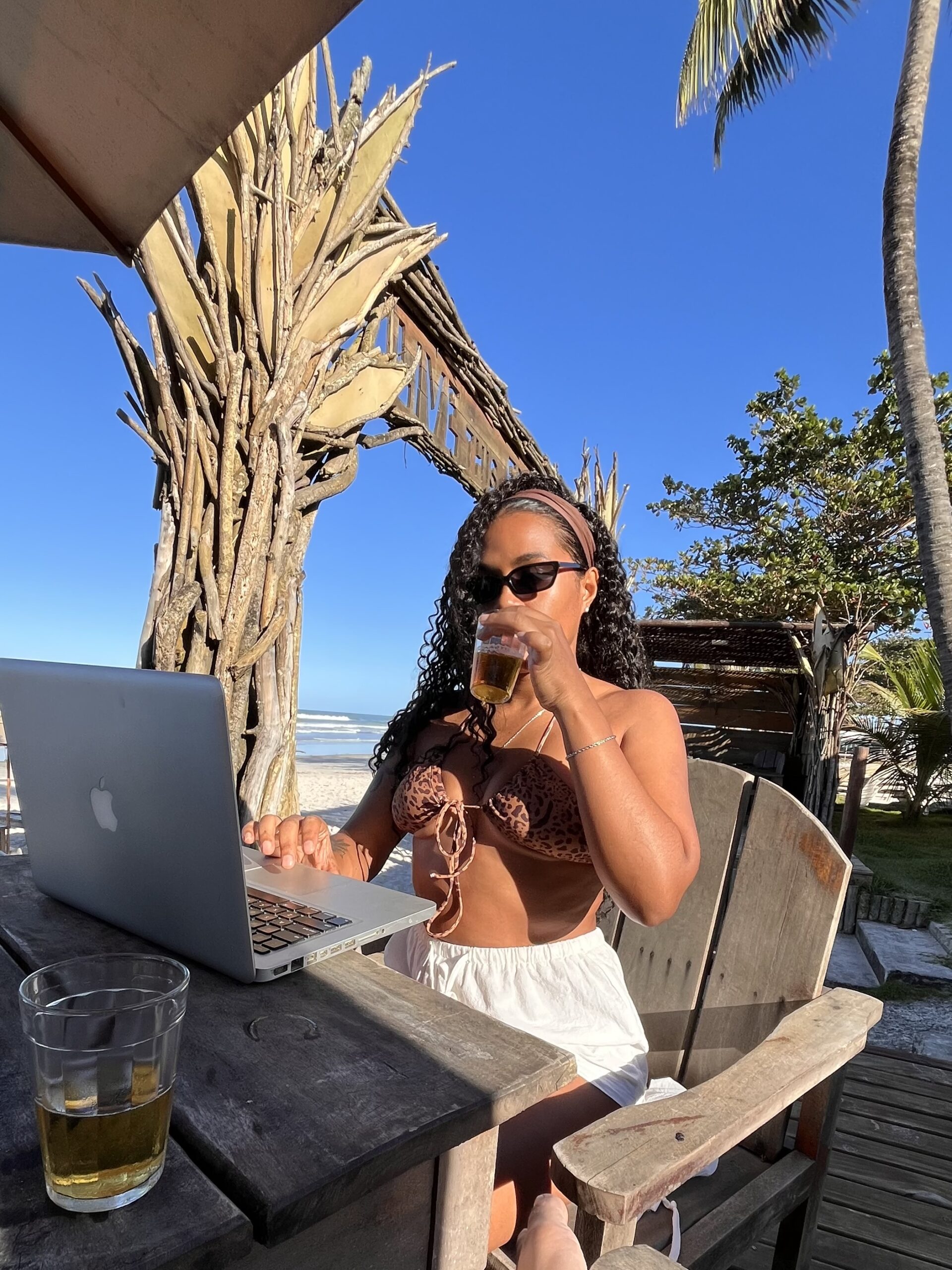HEY FRIEND!
I'm jemilla!
In the past 4 years, I’ve cut my teeth strategizing & writing award-worthy, revenue-increasing, results-snatching copy. And what really lights my fire is writing for woman-owned and BIPOC-led brands. I’m talkin’ the first day after a braiding appointment type of excited! Energizing them to go big with their bold ideas so that when launch time happens, the world thinks “OMG FINALLY, I’ve been waiting for something like this.” And giving them the tools to diversify the market.
about me
services
40 Copywriting Lessons From My 4 Years In The Industry
January 17, 2025
Let me share some copywriting lessons from my 4 years (officially 5, now) in the industry. From writing award-worthy copy for 55+ businesses to developing brand voices that actually convert. I’ve learned a thing or two (or fifty) about what works, what doesn’t, and what’ll have you crying into your keyboard at 3 AM.
Whether you’re a fellow copywriter, small business owner handling your own copy, or just curious about what goes on behind the scenes, these lessons will save you from making the same mistakes I did (like undercharging for rush projects or not having a solid contract — yeah, we’ll get into all of that).
Consider this your backstage pass to everything I wish someone had told me when I started. Let’s dive in!

Client Relationships
Lesson #1: Setting clear boundaries
If there’s one thing a client’s gonna do is tap dance all over your boundaries. So you have to be firm in setting them, and make sure your clients know what they are so they don’t cross them. Don’t want to do work on the weekends. They should know that if they reach out to you, it’ll be crickets until Monday morning. Sign-off at 4 pm on Fridays? Make sure they know that offline means OFF.
Lesson #2: Red flags to watch out for
If a client tries to:
- Find loopholes with your pricing
- Goes for the cheapest package possible and tries to add on more deliverables
- Keeps second-guessing or disrespecting your expertise
- Or helicopter Mom’s all over your work
That client is a HUGE red flag.
Lesson #3: Communication best practices
Over communication is always best. I’ll admit that even until this year, I wasn’t communicating with my clients enough. Once a week check-ins via email — with daily informal communication on a tool like Slack, WhatsApp, Telegram or Voxer — is what I’ve found to work the best. It keeps your client in the loop, humanizes you so they get more comfy with you, and gets them excited about their project!
Lesson #4: Pricing lessons
If you think you’re underselling yourself, you probably are. Look at industry averages for services you want to offer, all the variables —like years of experience, the client’s industry, and the scope of work — and what you consider a livable wage to establish your pricing.
Lesson #5: Project management insights
Plan your projects down to the day. I tried using Trello but never really used it. Then I started using Toggl Plan and I use it everyday. It helps me get my sh*t together, stay on top of my projects, and it’s really nice to look at. There are a lot of project management tools out there besides Trello and Toggl Plan — Zoho, Monday.com, Asana, Clickup and more. So you can find what works for you
Research Matters
Lesson #6: Voice of customer importance
A lot of great copy takes your customers’ words right out of their mouths. Not only do they resonate because DUH it’s exactly what your audience is thinking, but it humanizes your brand and minimizes the barriers that complex jargon creates.
Lesson #7: Cultural relevance
Brands that connect to the culture always perform better. Whether your team is primarily BIPOC, Gen Z, or into run clubs, cultural relevance will help you connect with your people more and attract more of the paying clients you want. When I rebranded in 2022 and established I serve women & BIPOC, guess what? I got more women & BIPOC clients — especially Black women, which is exactly what I wanted! And showing more of what I stand for as a Black woman definitely made things easier for me.
Lesson #8: Market research techniques
I’ve gotten a lot better at market research over the past 5 years. So much so I even made a pack of resources to help other service providers follow my organized process. I hosted an entire masterclass on how to do market research for free on Google, which you can watch here.
Lesson #9: Competitor analysis value
This is one of the most important parts of the research phase. And at first, I didn’t know how to really do competitor research. Now, I can find the top 3 competitors for my clients, analyze their content and offers qualitatively and quantitatively, and come up with recommendations from this insight!
One way of doing this is typing a keyword into Google and see the top 3 search results — this is completely free. Or you can use a tool like SEMrush to get more data-driven insight.
Lesson #10: Data-driven decisions
Data is top tier, especially when it comes to your SEO efforts. Otherwise, I wouldn’t know which content and offers are top performing and what to make more of, which SEO keywords to target, and more.
For example, ever since I rebranded, my Copy Retainer has been my most popular package that has sold like gangbusters. So this year, I’m leaning heavy into promoting this offer, and shelving my others that don’t get any attention until someone explicitly asks for them.
Plus, my highest performing blog posts — like this one, this one, and this one — are all about how to become a copywriter. So I know that copywriting mentorship, digital product templates, and group programs are something I should pursue next.
So don’t do anything until you have data that tells a story.
Writing Process
Lesson #11: Research first, write second
Can you believe that I didn’t do any research for my first copywriting project? WILD, I know. Luckily, now I know not to write a stitch of copy until I’ve crawled the internet for insight, mined consumer surveys and community platforms, and analyzed it all so I know the best thing to write. You should do the same.
Lesson #12: Brand voice consistency
When a brand switches up in how they talk, it’s WEIRD — like when this happened. It made everyone cringe, and feel a type of way. That’s why having a brand voice guide before writing copy is so important. I always suggest it to my clients, and they’re always happy I do. And even if you’re using AI to write your copy and content, you need to train it to sound like you consistently.
Lesson #14: Editing techniques
As soon as I finish writing something, I let it be and go about my day. Then I come back to it with a fresh set of eyes, and I usually find better ways of saying things. I also read it aloud, which also reveals words that sound weird. Keeping it simple is always best, and so is writing in active voice.
Lesson #15: Testing methods
You can do consumer surveys/interviews to test your messaging, use a tool like HotJar that shows how your content is performing — which also lets you get site visitor feedback —
Lesson #16: Getting and acting on feedback
Collect testimonials! I could scream this from the mountain top, because that kind of insight and social proof is a goldmine. I can’t tell you how many of my clients tell me they have no testimonials or don’t ask for any during our onboarding calls — but that is like an anchor for any copy. Trust me, you’re not being annoying asking for reviews. Ask your clients and customers so you know how you’re doing, what you can do better, and have other sources confirming you’re legit and worth investing in.
Lesson #17: Clarity first, creativity second
Keep it simple, stupid! Always write out what you want to say in the clearest way possible — if it helps, say it first and have a transcriber take it down. Then, and only then, use creative techniques to zhuzh it up. Otherwise, you’ll end up saying a lot without saying anything at all, or confusing your readers, or hiding the best message in fluff.
Business Development
Lesson #18: Finding your niche
There are a lot of copywriters that focus on a main thing, and a main audience. For me, it’s compelling, conversational, and cultured af copy for women & BIPOC businesses because that’s what I’m best at and this audience feels right for me. Before I settled on this, I was kind of just aimlessly offering services to anyone, hoping I could convince people I was good at what I do and trying to find high-paying clients. Now, the people I want to work with can pay me what I’m worth and get the best copy we’ve both seen.
Lesson 19: Building authority
Piggybacking off that last lesson and “trying to convince people I was good at what I do”, I didn’t do that until I learned everything I could about copywriting, marketing, sales psychology, and how to leverage storytelling in great copy. And honestly, I’m still learning. But without taking the time to be a student, and commit to being a lifelong student, I couldn’t convince people that I’m a trusted authority in this space.
Lesson #20: Portfolio development
I would always get tripped up when potential leads would ask to see a portfolio of my work. Because I didn’t really keep a record of anything or add it to my contract that I’d add my work to my portfolio. Now, I can confidently send people to my portfolio, complete with hand-picked projects that show my range, expertise, and creative skills. So, as a copywriter, start to build your portfolio. Don’t add every single project, but add the ones that show off your skill. If you don’t have any clients yet, do spec work to show what you can do!
Lesson #21: Networking strategies
Bulk DMing in the hopes of getting people to join your program? Cringe. Reaching out to people you actually want to build a relationship with and creating an authentic circle? Very demure. Very mindful. And protect yourself, because there are some bad seeds in this online space.
Lesson #22: Referral systems
A good chunk of my clients come from referrals — at first, I didn’t offer any kind of reward system. But now, I give my clients a 10% cut of the profits for referring a new client to incentivize referrals and to thank them for bigging me up! So putting some kind of referral system in place can be good for business.
Lesson #23: Retainers are TOP TIER
My Copy Retainer is my most popular service because it gives you expensive assets like website copy, brand voice guides, email sequences and more for a fraction of my project-based pricing. Plus, I get income coming in more often because my clients are sticking around for longer. So, if you can, have a retainer model to bring you consistent income.
Technical Skills
Lesson #24: SEO fundamentals
Step 1: Type a few keywords you think people will search for into Google. See what suggested searches pop up from the drop down. And add those to a list.
Step 2: Go to a tool like Ubersuggest or SEMrush and check every keyword from their list. What’s their monthly search volume, keyword difficulty, and search intent?
Step 3: Find your top 3 competitors and see what keywords they rank for, and which from that list you can also try to target.
Lesson #25: Analytics understanding
Knowing what to make of data, and how to act on it, is the key to a successful research process. For example, as I’m writing this, I’m writing for a financial coach who focuses on helping racialized & immigrant women maximize their everyday spending so they can travel more and enjoy financial freedom.
I see stats like “35% of Canadians now primarily use their credit cards to book hotel stays, a 12% increase from 2023” and “78% of women desire greater access to financial literacy resources”.
I know that a main focus for her messaging should be on providing educational resources that show (not just tell) Canadian women which travel credit cards to get. And how to turn their credit card points into trips without spending that much of their own money.
Lesson #26: A/B testing
I’ve mentioned A/B testing in the past to my clients and they don’t really know what it is. And because my clients tend to take their copy and dip, I’ve never had the chance to try it with their copy before. But I know that it’s important to optimize conversions. This video is super helpful, where Hubspot Marketing walks through 15 steps for the perfect split test and how to measure the results
Industry Growth
Lesson #27: Continuous learning
Like I said above, you have to commit to be a lifelong student. I got a Bachelor’s Degree in Marketing, but most of what I learned in school I don’t use today because it’s outdated. The industry, it’s a-changin’, and you have to keep up with the zeitgeist. So always read reports, keep up with the best-performing creative, and educate yourself with books, courses, and more.
Lesson #28: Industry changes
Whether it’s AI, Google’s new privacy changes, or a new tool that everyone’s using in their workshops, the industry is always changing. So, make sure to have a regular rotation of media outlets that keep you in the loop with these industry changes, and see how you can use it to your advantage! For example, online learning continues to be on the rise, but people are tired of the tried-and-tired course model. So, I knew that fill-in-the-blank templates that have the value of a course without the stuffy feel would be a good way to go.
Lesson #29: Market evolution
People used to go into copywriting because it seemed like a get-rich-quick scheme that would allow anyone with a laptop to travel the world and work on their own time. But now, people want to interact with the people behind the brand and to buy from brands that share similar values. Which means your branding needs to reflect that!
Lesson #30: Technology adaptation
One of my clients said that they help their clients find their “lean tech stack” and I realized that IT ME. Because there are countless tech tools out there, and it can get overwhelming. Having a small network of tools that work like a cohesive unit is the way to go. You don’t need all the bells and whistles that cost a pretty penny, just the basics that do what you need them to do. I like having Google Suite for all my docs and email communication, Toggl for project management and time tracking, Notion for content planning and for hosting my digital products, Dubsado for my CRM, Typeform for consumer insight, and Zapier for integrations across all these channels.
Lesson #31: Trend awareness
Knowing what’s trending can help you keep your finger on the pulse and stay on the discover page. But it can also help you weed out the trends you can ignore, because it’s too much to keep up with every single one.
Personal Growth
Lesson #32: Work-life balance
I’m not going to lie to you, I’m writing this at 12 am because I don’t know when to shut my damn laptop. But I am getting better at setting hard start and stop times for my work — so I have my evenings and weekends to myself. But on days when things derail my plans, I end up here. Sh*t happens, and that’s okay. But don’t let your work life control your personal life.
Lesson #33: Burnout prevention
I’m telling you this but I also need to listen to this lesson. Set regular work hours. Don’t work on weekends. Give yourself leeway with client projects so you’re not strapped for time. And schedule vacation time so you get regular breaks.
Lesson #34: Confidence building
Imposter syndrome’s a BITCH, ain’t it? I’ve spiralled down that hole more times than I care to admit. So it’s important to have ways of boosting your confidence when you’re down. Have a bank of DMs and texts that big you up. Testimonials and messages from client raving about your work. And even videos that make you feel like the BADDEST baddie on the planet.
Lesson #35: Avoid herd mentality
There’s always going to be someone online telling you what’s best. Waking up at 4 am to workout, intermittent fasting, making digital products on Canva that you have no business selling. Not everything everyone else is doing will be the right fit for you. I know damn well I’m not getting out of bed before 7:30 to workout, that fasting is not for me, and that I need to make digital products over a long period of time so I’m proud of them while promoting them. So find what works for you, and learn to tune out the yappers when need be.
Lesson #36: You don’t need to do all the things
When I first started out, I thought I needed to do a quiz because everyone seemed to have one. But a copywriter friend of mine asked “Why?” — and you know what? She’s right. Why? You don’t HAVE to have a blog and newsletter and a YouTube channel and every social media account imaginable just because it seems the 7-figure gurus do. Find the channels where your people regularly consume content, what kind of content they like (short-form vs. long-form, written vs. video vs. audio, etc.), and stick to that. No need to do all the things and burn yourself out in the process.
Future Predictions
Lesson #37: Community is key
Communities are the latest buzzword in the industry. And it’s no surprise with more people wanting a deeper connection with likeminded people and the brands they buy from. I’m going to try and build a community through my digital products this year, and you can do it, too! Whether that’s with a private community on Instagram or a Slack channel.
Lesson #38: Analog is back
People are cutting up magazines to build their vision boards, using Polaroid cameras, and customizing their tech with widgets that look an awful lot like the interfaces from the early 2000s. Analog is SO BACK, baby. So, you can lean into this with lo-fi videos that aren’t super done up and edited, sending written thank you notes and physical cards to your clients, etc.
Lesson #39: Show life AFK
Business owners and their employees are becoming influencers on brand accounts, showing what life is like outside of business operations. I’ve been doing this more by showing my ‘fits, my day working at coffee shops downtown, and a day in my life as a copywriter/actor/retail associate. So find ways to humanize your brand — because posting educational content and promoting your services all the time can get tired.
Lesson #40: AI will balloon, and then fizzle out
I’ve gotten used to the idea of using AI. But with so many ads inundating consumers everyday, people are getting tired of it (if my boyfriend is any indication, he LOATHES it). And as we learn how much power AI uses and its detriment to the environment, a lot of people are going to prioritize human capital over AI. So, make sure to always have an arsenal of human talent if AI goes bust.
In Conclusion…
I’ve learned a lot, but I’m still learning. And as I do, I’ll share everything new I learn with you on my blog, in my newsletter, and on social media. So stay tuned on my journey! I hope you stick around.






